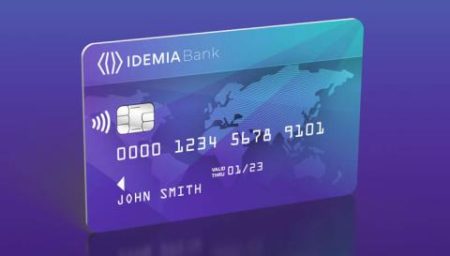Securing daily payments with international and domestic scheme certified products

Using embedded finance is a “win-win” for traditional banks and non-financial companies. The former can access new markets while the latter get to offer a seamless payment experience. This collaboration is underpinned by Banking as a service and Card as a Service models.
Embedded finance may be one of the top 3 buzzwords currently doing the rounds of the financial ecosystem. In simple terms, embedded finance is the placing of a financial product by a non-financial company in order to sell financial services to its end users, seamlessly weaving these services into its digital end-to-end customer journey.
Non-financial companies providing financial services as part of their customer journey is not really a new thing—think about a retailer offering to finance appliances such as a fridge or a television, or an airline offering credit cards. Such private-label cards have been and still are an important part of card issuing. The novelty that embedded finance offers is a seamless, digital, fully-integrated experience in phase with what today’s customer expects. Consequently, the embedded finance market is forecast to be worth over $7 trillion by 2030, i.e., twice the combined value of the world’s 30 biggest banks1!
Banks possess bank charters which allow them to do business in the financial services industry—i.e. “the keys to the banking kingdom”. They also possess a wealth of expertise in navigating the regulatory and compliance complexities of the financial services industry. Both are tricky for emerging financial services providers to acquire—let alone having to build this type of infrastructure from scratch from an IT perspective, or having to buy a bank. Non-financial companies can access and offer financial services through Banking as a Service (BaaS) models where banks provide these non-traditional financial service providers with access to their regulated infrastructure.
In an embedded finance model, the non-traditional financial service provider acts as the “customer front” and financial product/service distributor. Banks are the financial engine. They use this additional channel to provide financial services at scale and at the lowest possible cost. This arrangement leverages their existing back end without the need to market products through their own distribution networks “from their front end”. Hence, the potential for a win-win situation.
The traditional private-label credit card model has been and remains an important part of card issuing, and the question is how this new wave of embedded finance will impact the future of cards. There are many reasons to believe that it has the potential to unleash huge untapped potential for card issuance.
Cards can benefit embedded finance providers in many ways. Use cases include instant payouts, loyalty points redemption or scaling merchant acceptance. A perfect example is the Uber Pro Card which gives Uber drivers cash back on gas or electric vehicle charging (when drivers use the card to pay) and provides drivers with free automatic cash outs.
However, issuing a card is not as easy as it appears, especially from a compliance and regulatory perspective, and this is where Card as a Service (CaaS) comes in. In the same way that Banking as a service takes a lot of the complexity out of banking, Card as a Service takes the complexity out of card issuance, making it easier for non-financial players – particularly for startups – to issue cards and thereby bringing a significant untapped card market into play.
During the past couple of years, some of the world’s most iconic digital companies have launched groundbreaking physical payment cards, pushing back the frontiers of card design possibilities. For example, customers can design their own doodle that will then appear on their card. As they are now set to be joined by scores of innovative startups, banks offering Card as a Service can leverage this hyper-personalization trend to climb up the value chain. These issuers may also tap into new revenue streams with the adoption of multi-application cards and move to a position of even greater value.
Last but not least, as cards are now poised to become even more omnipresent by adding value in emerging, embedded user journeys, the next big step for BaaS and CaaS players might very well be to seamlessly weave adjacent services such as card activation and digital PIN management into the overall card issuance experience—hence creating and monetizing value-added services for embedded finance providers.
1 Embedded Finance: a game-changing opportunity for incumbents, Simon Torrance, 2020